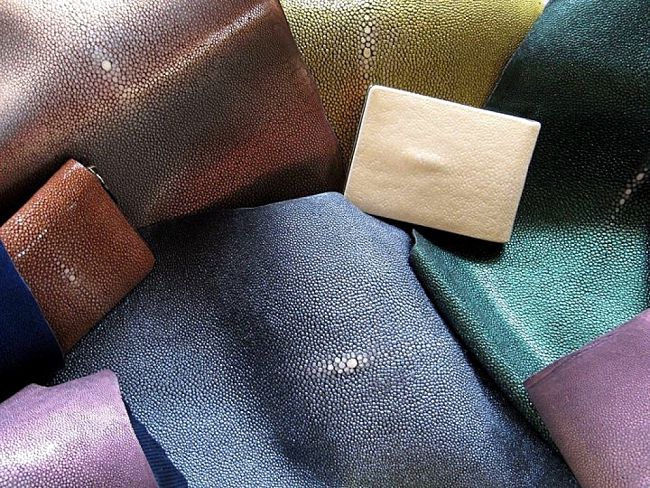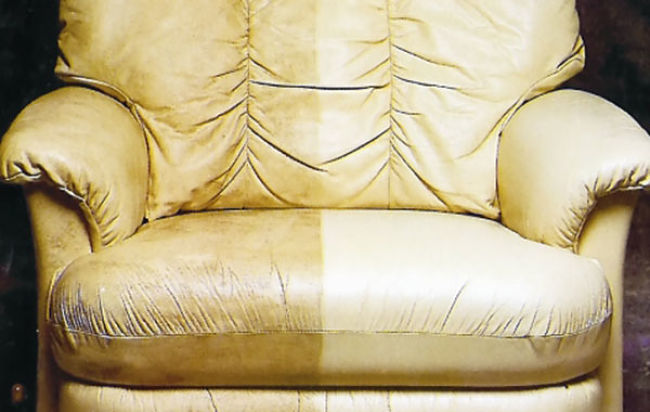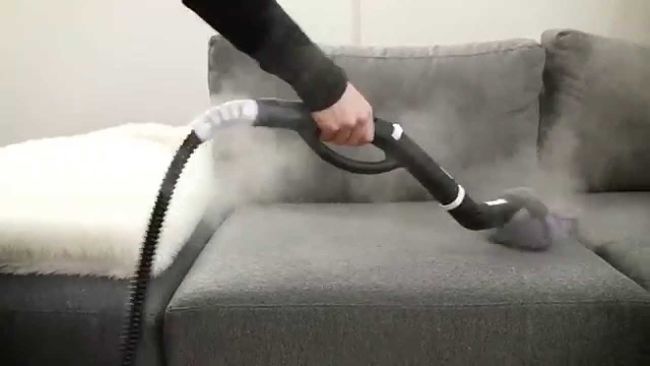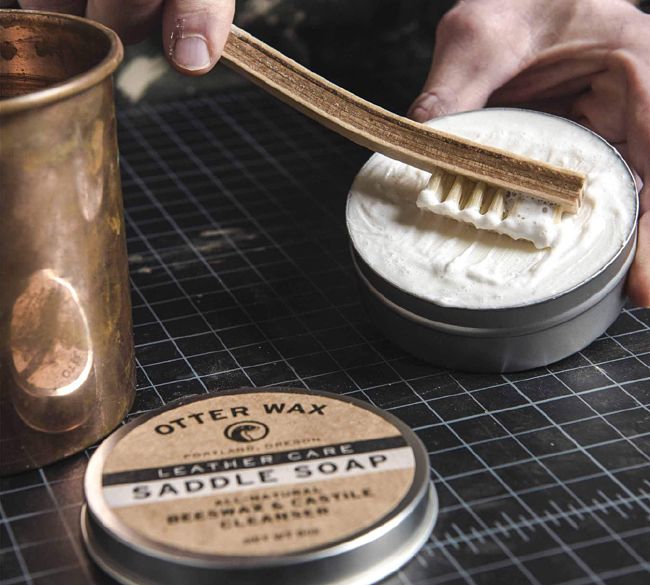How to Clean Leather Jackets, Couches, Handbags, Car Seats with Home Remedies
Why Does Leather Need Protection and Special Care? Leather is a natural product and despite being tough and generally resilience and easy care it is porous and prone to drying out.
Leather needs regular treatment with a conditioner and protective cream to provide an outer 'raincoat' to shed stains, chemicals and various other substances. Just lie skin, leather needs to be moisturized to stay supple and avoid dying-out and cracking.
Exposure to sunlight and heat can cause cracking. Once the surface is cracked and dry it is much more prone to stains and dirt which can penetrate into the leather making them much harder to remove.
The cleaning process itself can dry and damage the leather surface increasing the risk of future stains and marks and early ageing and deterioration of the leather.
This article provides a general guide on how to care for, protect leather, clean and re-condition leather.
It also provides tips for cleaning leather coats and jackets (including suede), couches and upholstery, purses and handbags and car seats. Shoes are not included because they require a different approach.
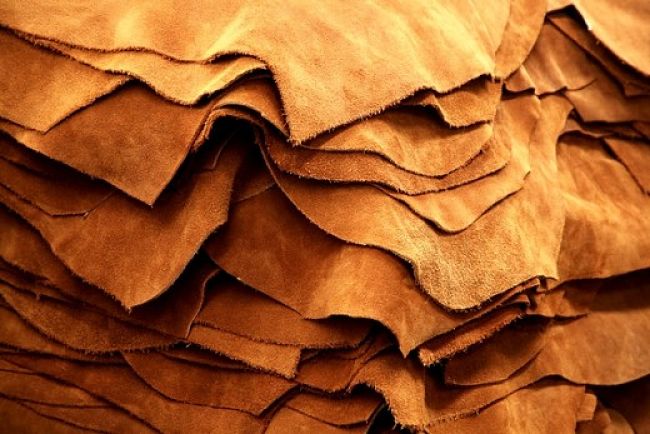
Protections needed to Maintain Leather Products
Stains - Raw leather is very absorbent and loves to soak-up water or any liquid it comes into contact with. That is why it is so vulnerable stains if there are no protections in place. Once stains penetrate they are very hard to remove. High quality leather protection creams and conditioners provide a water resistant covering for the leather surface. Once the protection is added the leather is much easier to keep clean as spills simply wipe off.
Damage – Despite its reputation the outer layer of leather is soft and vulnerable to chemical and physical damage Over time, human body oils and perspiration, pets and sharp objects can dry and damage leather.
Drying - Leather is very vulnerable to drying out and this causes cracks and other damage to the leather. Cleaning products also have a drying effect. Protection creams and conditioners help to protect the leather from drying and help overcome minor drying damage.
White leather needs special protection – Garments, handbags and leather couches and upholstery made from white leather or very light colors requires special attention. It is very vulnerable to stains and marks. Dye transfers from damp clothes and food spillages are also common. Always wipe up any spillages quickly and treat the leather frequently with protective creams and conditioners designed for white and light colored leather.
The Ten Essential Tips for Leather Care, Protection and Cleaning
Spillages - Clean all spillages quickly and thoroughly. Never let them dry of soak in.
Spot Stains - Removes spots, marks and small stains immediately you notice them. The longer you leave them the harder they will be to remove.
Clean your Leather Furniture Regularly but Lightly – Keeping your upholstery clean with a regular spot clean and wipe over is the best way to avoid having to deal with heavy staining. Treat it gently and apply a conditioner.
Use Protective Creams and Conditioners - Apply protective creams or conditioners after very cleaning session, beginning with the first application when you have the furniture delivered to your house and before you use it.
Keep your leather furniture and leather car seats away from heat and avoid direct sunlight - Heat and sunlight causes leather to dry out and bleach. Drying makes the leather brittle, stiff and prone to cracking. Locate your furniture at least well away from any sources of heat such as room heaters and out of direct sunlight that may protrude into the room.
Choose high quality care products specifically designed for the type of leather - Only use cleaning and protection designed for leather. Never use strong detergents, chemicals, bleaches or household cleaning products on leather. Always test leather care products before use as their impact may vary.
Protect your furniture from physical damage - Leather is tough and resilient, but it is not immune to damage. Leather needs to be protected from scuffs, burns, tears, scapes and scratches. Knives and other sharp things can damage leather. Pets can also damage the surface. Shoes can cause scuffing. Some precautions are:
- Take when moving leather furniture. Always lift it and don’t pull too hard on the surface. Always cover the leather furniture when moving or when renovating to avoid splashing with paint.
- Don’t leaving sharp objects on the furniture and beware or anything that could scratch, cut or cause abrasion. This includes scouring pads and steel wool that should not be used to remove stains and food residues.
- Keep your furniture safe from pets.
- Take care with smoking and candles. Leather is reasonably fire resistant, but a hot cigarette or flame will burn it or cause scorch marks.
- Avoid spilling or using chemicals to try to clean leather. Nail polish and remover, bleaches and acid cleaning products can damage leather. Water left on leather can leave marks in the protective coating. Be careful when cleaning around leather furniture that the products don’t spill onto the leather itself.
Avoid sunlight - Never place your furniture in direct sunlight. Sunlight has a drying effect on leather.
Keep all dyes away from any Leather Products - Leather is porous and absorbs moisture unless it is sealed: Sources of dyes are:
- Dyes from newspapers, magazine and various types of fabrics (clothing, cushions, curtains and throws), can inadvertently transfer to the leather and leach inside causing a stain. Many food stuffs such as curries and spices can stain leather. Dye transfer can occur simply when someone wearing wet cheap clothes or jeans sits on the leather couch. Stains caused by dye transfer are very hard to remove.
- Always ensure cushions and throws and cushions are colour-fast and will not cause dye-transfers before putting them on your lounge or couch.
- Never put wet towels or clothing or anything with cheap dyes on your furniture. Even streamers, gift wrappings and colored paper towels can leach dyes when wet. Be very careful with all food stuffs that can stain.
- Don’t leave newspapers, magazines or printed plastic bags or wrapping materials sitting on your furniture.
Use leather conditioners supplied, or recommended by the manufacturer of the leather goods according to the instructions - Don’t miss regular treatments.
How to Clean, Restore and Maintain Leather Furniture
All types of soiling from dust or perspiration can eventually damage the leather. Dust, dirt and sand are abrasive: it acts like sandpaper. So regular cleaning is necessary.
Every week - Dust your furniture using a vacuum cleaner (low suction setting) fitted with upholstery attachment or a soft brush head. Next use a very clean cloth dampened with warm soapy water to wipe over all the surfaces. Look carefully for any spots are marks. Clean them off with the spot treatments described below. Dry the leather with a soft towel and apply a leather protective cream or conditioner.
Every 3-6 months - You should thoroughly clean your furniture with the recommended leather furniture cleaner for your furniture. This is designed to remove general stains and marks and the built-up dirt, grime and mildew. Re-apply conditioners and leather creams to help keep the leather moist and in good condition.
Home Cleaning Remedy
- Buy same saddle soap (available at general hardware outlets and horse equipment suppliers) or equivalent. It has a high oil content and is designed for leather (though it has a high pH). It will penetrate and clean the leather.
- Apply a small amount of saddle soap on a pantyhose.
- Rub in a circular motion over the leather, particularly on spot stains until it goes foamy.
Wipe it off with paper towels (you should see the grime coming off on the towel).
Home Polish Remedy
- Put a soft cloth on plate and add about 1 teaspoon of beeswax (carefully soften it in a microwave), 1 teaspoon of lavender oil and 1 teaspoon of lemon oil (which emulsifies the bees wax).
- Fold the cloth over several times so the wax is in the middle of the cloth. You only need a small amount to squeeze through. It will cover a large area of leather.
- Rub it on the stain, again in a circular motion.
- This will both condition the leather and seal the couch against further grime.
Cleaning Car Seat Leather Upholstery
- Car leather is very different from couch leather and the leather used for bags and shoes.
- Always use high quality cleaners and conditioners specially designed for car seat leather. Carefully follow the instructions and preparations.
- Car leather needs regular cleaning and care to protect it. Exposure to sunlight, and high temperatures are particularly damaging.
- Regular monthly cleaning is recommended as well as quickly cleaning any spills as they occur and spot cleaning.
- Some people use aerosol hairspray to attack stubborn spot stains, but always try it first in a hidden location. It is not recommended for ink and dye transfer stains as it tends to spread the stain, making it worse
- A good mild stain remover is one part white vinegar and one part water. Rub the stains with a cloth dampened with the mixture, and then allow the leather to dry.
Cleaning Leather Jackets
Gently wiping over the surface of the jacket with a mild soap on a damp cloth is generally sufficient. For bad staining use proprietary products purchased from leather clothing suppliers. Always use high quality products and test first to ensure they are color-safe. Always apply a high quality leather coat conditioner after cleaning. Clean the inside of the jacket with cleaner suitable for the fabric. Be careful not to spill it on the leather.
Cleaning Leather Purses and Handbags
Handbags made from unsealed Leather (leather will darken with water)
- Don’t use any leather cleaners or conditioners made for car seats or leather couches on bags as the leather is quite different.
- Don’t use any face or hand lotions or creams on your leather bags. They often contain waxes and mineral oils that may darken the leather.
- Do not use Saddle Soap on bags as its too harsh for the thin leather on bags.
- Don’t use lanoline leather conditioners and creams - the lanolin oil tends to damage and rot the leather.
- Don’t use any types of wipes or baby wipes as they contain oils and detergents that may stain the bags.
- Oil stains on bags can be removed by applying a little corn starch powder as quickly as possible. It will absorb the oil and can be brushed off with a soft toothbrush or cloth.
- Ink stains and marks can often be removed using a white pencil eraser. Rub gently. If the ink penetrates into the leather you may need to get the bag cleaned professionally. Water stains also require professional treatment
Handbags made from sealed and finished Leather (leather will not darken with water)
- Don’t use alcohol on ink stains, as this can make the stain spread and soak in. For ink stains - use a white pencil eraser straight away or if this does not work seek professional treatment.
- Don’t use saddle soap on leather bags
- Use cornstarch (as above) for oil stains.
- Keep all purses and handbags out of direct sunlight – once is enough to ruin them.
General Spot Cleaning Tips
Mildew can be treated with 50:50 mix of water and rubbing alcohol. Rub the stain with a soft cloth. Reapplying conditioner will be necessary because the alcohol removes the oil. Don’t use Chlorine Bleach on leather.
Perspiration stains can be treated using a mixture of vinegar and water (75:25).
Blood stains can be removed by using ammonia and water (25:75 always test first).
Gum can generally be removed from the surface with ice cubes. Chilling the area, hardens the gum and it will generally come off when rub with a soft cloth.
